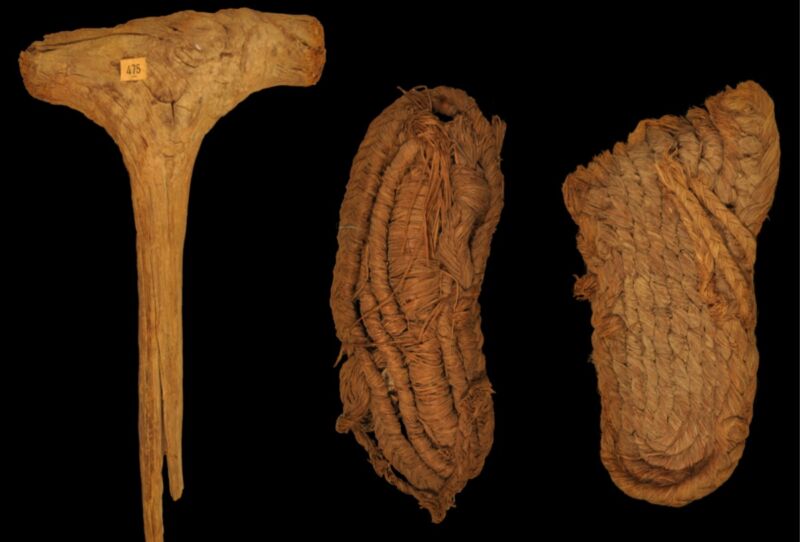
MUTERMUR project
In the 19th century, miners in southern Spain unearthed a prehistoric burial site in a cave containing some 22 pairs of ancient sandals woven out of esparto (a type of grass). The latest radiocarbon dating revealed that those sandals could be 6,200 years old—centuries older than similar footwear found elsewhere around the world, according to a new paper published in the journal Science Advances. The interdisciplinary team analyzed 76 artifacts made of wood, reeds, and esparto, including basketry, cords, mats, and a wooden mallet. Some of the basketry turned out to be even older than the sandals, providing the first direct evidence of basketry weaving among the hunter-gatherers and early farmers of the region.
Organic plant-based materials rarely survive the passage of thousands of years, but when they do, archaeologists can learn quite a bit about the culture in which they were produced. For example, last year we reported on the world’s oldest known pants, produced in China around 3,000 years ago. With the help of an expert weaver—who created a replica of the pants—archaeologists unraveled the design secrets behind the 3,000-year-old wool trousers that were part of the burial outfit of a warrior now called Turfan Man, who died between 1000 and 1200 BCE in Western China. To make them, ancient weavers combined four techniques to create a garment specially engineered for fighting on horseback, with flexibility in some places and sturdiness in others.
A local landowner discovered Cueva de los Murciélagos (“Cave of the bats”) in 1831, and made good use of all that bat guano in the main chamber to fertilize his land. At some point it was also used to house goats, but then the discovery of galena turned the site into a mining operation. As the miners removed blocks to access the vein, they opened up a gallery containing several partially mummified corpses, along with an array of baskets, wooden tools, and other artifacts. Most of the plant-based artifacts were either burned or given to the local villagers.
It was another 10 years before an archeologist named Manual de Gongora y Martinez interviewed the miners about the discovery and collected the scattered surviving artifacts for posterity. He recorded some 68 human remains and assumed the artifacts were associated with those burials: ceramic shards, flint blades and flakes, quartz, a polished ax head, bone awls, ornamental shells, wild boar teeth, and even a gold diadem, as well as the plant-based basketry, sandals, and wooden objects.

According to the authors, the unusual preservation of these plant-based objects is due to the cave’s geology. There is almost no humidity, and the Angosturas gorge channels a dry wind current through the cave’s narrow upper entrance. As the wind moves through the cave, it cools and dries and increases in speed, thereby making it difficult for plant-hungry bacteria to thrive. Alas, the original positions in which the items were found were never recorded, just that they were recovered from the inner part of the cave. So archaeologists cannot rely on their usual contextual methods to draw definitive conclusions. That said, “The sandals, baskets, and wooden artifacts… constitute a unique sample of organic artifacts absent in other archaeological sites of early farmer communities,” the authors wrote.








